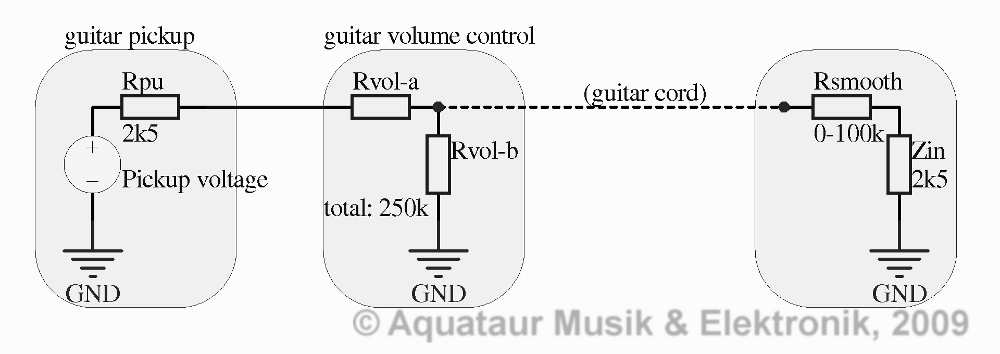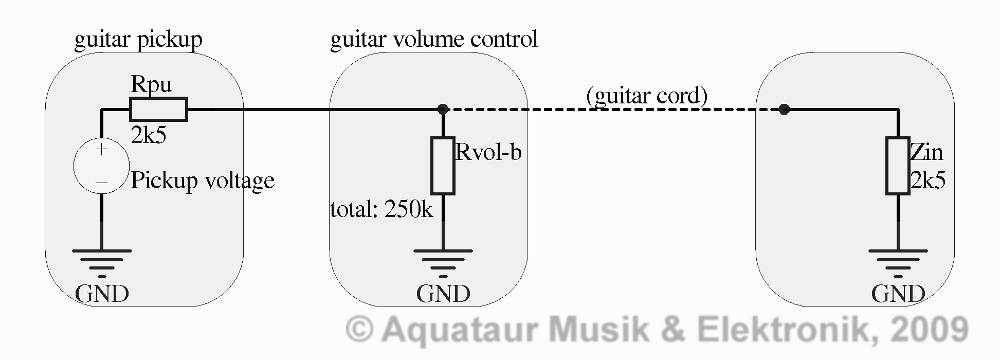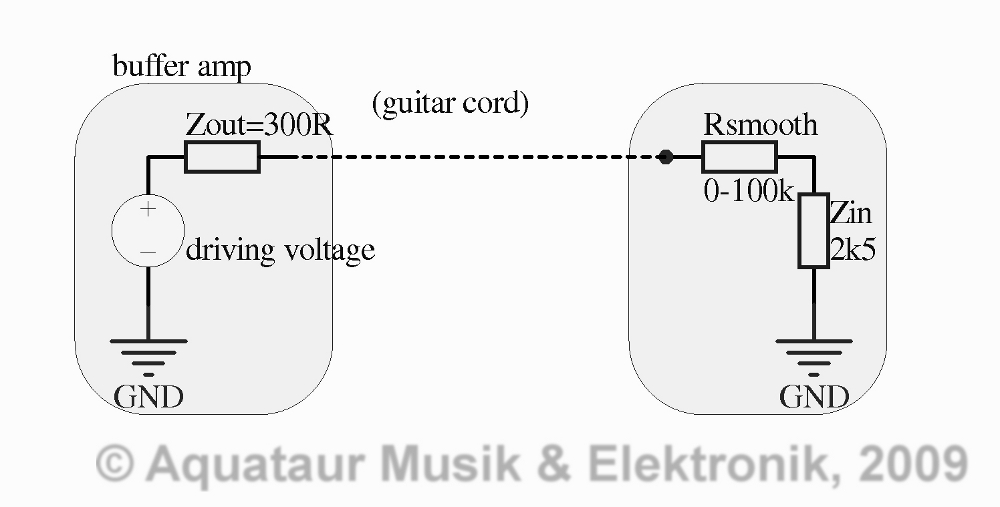| The
Poker
Face - a
no-compromise fuzz face A fuzz face implementation with vintage sound but modern attributes Part 1: theoretical considerations last update: May 14, 2011 Copyright
2009-25
by H.
Gragger. All Rights Reserved. All information
provided herein is
destined for educational and D.I.Y. purposes only.
Commercial re-sale,
distribution or usage of artwork without explicit
written permission of
the author is strictly prohibited.The original
units with
their
associated trade-names are subject to the
copyright
of the individual copyright owner. The Author is
by no means affiliated
with any of those companies. References to trade
names are made for
educational purposes only. By reading the
information provided here you
agree to the Terms
of
Use. The working language
is kept in English as an aid. Read here
why.
|
||||||||||||
| MAIN PAGE>MUSIC
STUFF>POKER FACE PART1 MAIN PAGE>MUSIC STUFF>POKER FACE PART2 Index   Gear
addiction Gear
addiction  First
trial
-
Germanium First
trial
-
Germanium  The
digital
simulator The
digital
simulator  Silicon
to
the rescue Silicon
to
the rescue  No
compromises the
birth of
the Poker Face No
compromises the
birth of
the Poker Face  Anamnesis
of
environmental facts Anamnesis
of
environmental facts  What
a
buffer can
change What
a
buffer can
changeGear addiction There will be not many Hendrix aficionados that have not tried to copy his tone by obtaining the very same gear he used, myself included. The fuzz face, amongst others, seems an indispensable requisite for that. Unfortunately, decent clones that are true to the acclaimed original are not available to everyone for manifold reasons. Fortunately, some ingenious tinkerers provide contemporary solutions. Being fully conscious of the fact, that a great deal of a personīs signature sound stems from intonation, I felt the urge to have a fuzz face of my own. It was clear, that most of the modern clones, although maybe even manufactured by the original companies, have little to do with the original due to the lack of suitable retro-transistors, letting alone the price tag, so buying one was rapidly phased out as an option. It is hard to determine what a musical device sounds like from listening to an interpreter using this device, even more so if the recordings are age-old. You have to have such a device right in front of you and play it yourself, with your gear. So building a fuzz face was the issue. Back To Index First trial - Germanium I got hold of a box choke full of NOS germanium trannies, leftover from a company that had folded and given away all their spares. I built the circuit on a protoboard, with all tweak able resistors implemented as potentiometers. I measured transistor gains and leakage values according to R.G. Keenīs article and tried PNP and NPN and everything. To cut it short they all failed catastrophically. The circuit sounded farty, buzzy and simply unusable, no matter how much I twiddled the pots. Before I was taking the axe to the whole thing I chose the last pair of transistors just for their funny look, and those sounded marginally better. The whole issue got suspended temporarily. Back To Index The digital simulator It was not until recent that I needed a wah-wah for a certain song. The most expensive solutions are hand-wired analog stomp-boxes, and the cheapest are digital devices, so I landed with a Digitech RP-500 multi effect-processor, which is a very powerful and good sounding device that emulates hundreds of guitar-related devices. This device has a fuzz face digitally emulated, and I was Keen (pun intended, R.G.) to hear that. I was not overwhelmed with their implementation. Hard to say how they have captured this deviceīs peculiarities. Since a stock fuzz face is probably the only device in sight that does not benefit from the usual electrical environment, the folks that did the digital model may have overseen the special treatment it needs to work well. As Mr. Keen explains, the fuzz face has, opposed to probably most of the other effects devices, a current driven input with very low input impedance and a weak drive capability, which practically precludes any sequence other than guitar-fuzz face-amp, A buffered (active) guitar for example will yield a harsh tone (at a glance at least), certain wahīs before will produce howling. Back To Index Silicon to the rescue Some crafty guys have analyzed the pitfalls of this ancient circuit and found remedies for them. But still the sound was different. It strikes me how it could have been overlooked for centuries that, disregarding the implementation of transistors, similar gain ranges needed to be employed to make the device even anywhere near sounding like the original. To my knowledge, the YAFF (yet another fuzz face) was the first one to use silicon transistors meeting those specifications, followed by a refined design from Fuzz Central. This sounded plausible enough to undust the prototype fuzz again. A fuzz face was built closely to the specifications of Fuzz-Centralīs "Axis Face Silicon", which has become the core fuzz unit of the following design. This itself is an already improved design, I suggest you read those pages before. Lo and behold the first test sounded surprisingly good. Hard to know if it sounds close to the original if you do not have the original right in front of you, but it has the virtues described. I adopted the circuit with exactly the values as described, with only minor changes explained later. To my taste it is a good sounding fuzz face. Back To Index No compromises the birth of the Poker Face Now living with compromises without even trying to improve the situation is not my thing. No evolution is happening if all compromises are accepted blindly. So I thought up a way of improving the device without sacrificing its virtues. A special buffer was added to the input, that did not spoil its ability to clean up when you roll the guitarīs volume back and one to the output, that prevented sound deterioration when the volume was down. A low current, low noise LED flasher circuit was added to indicate its status. Since a device preceding or following this device was no more able to see what was going on behind the plugs, the name Poker-Face was born in analogy to a card player who conceals his true emotions by displaying a constantly blank face. Back To Index Anamnesis of environmental facts Although many engineers have made thoughts over the function of the circuit itself, I have found little research on external factors, i.e. what its predecessors and successors look like electrically and how they interact. A stock fuzz face has an input impedance of some kOhms, which is very low compared to most other effect devices. It is excited by a current rather than a voltage. A driving current injected into the fuzz faceīs input will develop a voltage across any series resistance into the input. This is mentioned just for completeness, because it has been debated at length elsewhere. Letīs look at the guitar, that typically precedes a fuzz face. It is said that upon rolling back the volume on the guitar the fuzz face cleans up dramatically, an ability it loses on a superficial look, if you insert a low output impedance buffer. A Stratocaster is probably the most likely specimen to be teamed with a fuzz face. This has, on the vintage variety at least, some 5-6 kOhms per pickup, resulting in something like 2,5 to 3 kOhm if two of them are on simultaneously. Together with the volume pot an equivalent circuit similar to the one shown below will result: The resulting resistance sweep for a typical 250k log volume pot over its usable rotation angle is shown in the graph below.
On the extreme setting, where volume is full up (Rvol-a=0, Rvol-b=250k) and two pickups in parallel we have a situation as depicted in Fig.3: the voltage source from the pickups is operating into a 2.5k /2.5k divider, which means roughly an attenuation of two for the signal. As soon as the volume pot is turned slightly down, as we can see from fig.2 , Rvol-a quickly starts to rise by a magnitude (due to the log law of the pot), forming an initially weak voltage divider in conjunction with Rvol-b (due to the big value of Rvol-b), but a strong voltage divider on Zin (due to the small value of Zin). Both divider networks (the guitarīs output impedance network and the fuzz faces input impedance network) do interact, so that turning back the guitarīs volume will decrease the signal into the fuzz face in a non-linear fashion (to the ear). The Zin network is far more dominant in its action due to its smaller magnitude. It is therefore understandable that the pokerface cleans up radically even upon the slightest variation of the guitarīs volume pot. The insertion of an arbitrary series resistor Rsmooth will improve the situation, because this causes a more severe voltage attenuation right from the start. And a small signal will let the fuzz face sound cleaner. Back To Index What a buffer can change
Disregarding Rsmooth for the moment, the fuzz face now getīs the full signal from the driving voltage, independent of the impedance variations on the volume pot. The buffer does its thing - it separates circuits. The guitar volumes voltage divider action has been separated from the fuzz faces input divider action. These conditions introduce some different practical behavior:
The question arose, whether a buffer would sacrifice dynamic effects, meaning playing dynamics at a given setting of the controls. This prove to be not the case, because
I installed an A/B switch across the input buffer temporarily to evaluate the tonal differences the input buffer makes. All familiar sounds can be reproduced with a buffer in place, provided some Rsmooth is in place. Unfamiliar sounds are possible of course, if Rsmooth is at a minimum. No difference in dynamic behavior was observed on extensive comparative tests. The condemnation of buffers in conjunction with fuzz faces is therefore totally unjustified and stems from the fact that people compared the direct A/B tone without realizing, that the controls have a different behavior with and without and require some twiddling to achieve similar results. On the output side, the high impedance volume pot in conjunction with subsequent cable capacities and other loading circuits is liable to cause some significant treble roll-off and muffling of sound, which some designers tried to counteract by lowering the value of the volume pot. This I consider not a good idea, because a low impedance pot might load the core fuzz circuit itself. (However, this is a matter of personal preferences...). The sonic effect is not dissimilar to the sound degradation on a guitar driving a long cable when the volume is rolled back, and it amazes me, that nobody has tried a treble bleed capacitor like they use on guitar volume pots. This is, nevertheless, just a bad but cheap workaround. A more elegant solution is implemented in the Poker Face and will be described in part 2 of this series. Back To Index proceed to part2 of this series: practical implementation MAIN PAGE>MUSIC STUFF>POKER FACE PART2 MAIN PAGE>MUSIC STUFF>POKER FACE PART1 |
||||||||||||
MAIN PAGE
| MUSIC STUFF | IMPRESSUM  (c) 2009-25 AQUATAUR Musik & Elektronik |




